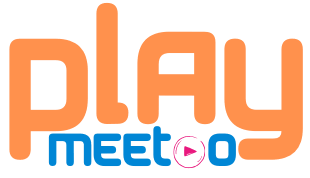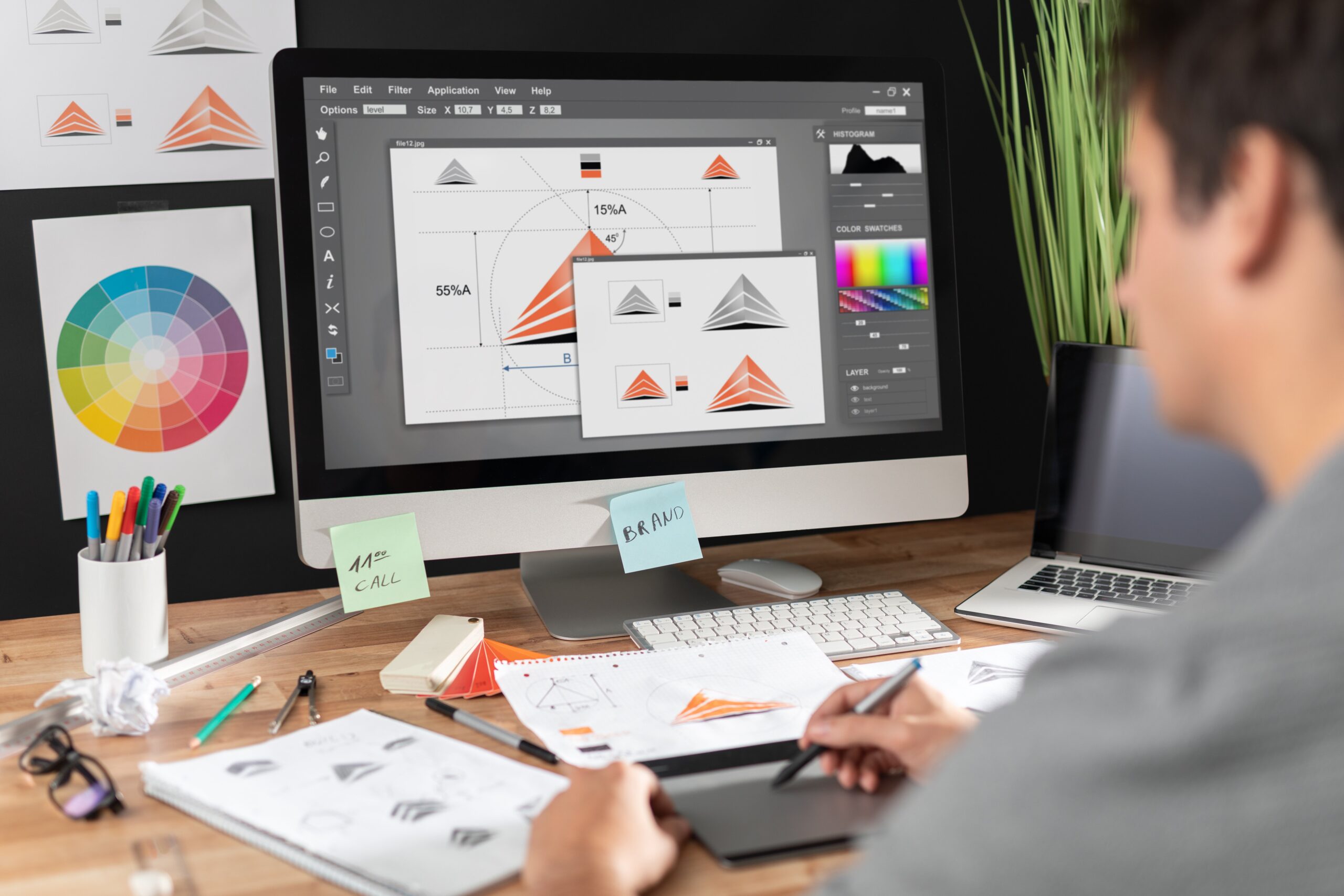Graphic designers employ a range of tools and skills and are employed in a variety of fascinating sectors. If you’re creative adept, artistically talented and proficient with computers, then you may consider exploring a career with graphic design. Understanding more about the career options available will allow you to decide whether you’d like to pursue a career in graphic design.
This article will look at the steps to becoming graphic designers, what tasks and responsibilities they are required to perform as well as the amount they earn as well as the qualifications and skills they require to complete their job effectively.
Table of Contents
Important takeaways
- Graphic designers’ primary responsibilities include conceptualizing ideas, collaborating with colleagues, deciding elements to design, and staying up-to-date on the latest developments in design.
- The most important skills needed by graphic designers include proficiency in software for creative design such as Photoshop, Illustrator, and CorelDRAW that can be further developed with regular practice or formal education.
- The most popular career options for future graphic designers are self-learning design software, taking on the opportunity to work on internships, freelance assignments and creating a strong portfolio.
What Does A Graphic Designer Do?
Designers of visual communication create content using the aid of special equipment and software. Graphic designers are employed in any industry that relies on visual design. Every industry, regardless of the sector requires graphic designers to design advertising, marketing and software development, as well as entertainment. They design diverse content such as posters, logos visual effects, website banners, layouts, and video transitions. The most important tasks that a graphic artist has is to:
- Gather and research data that aids in making appropriate designs
- Conceptualise new designs
- Collaborate and receive input from team members such as editors, copywriters, and photographers.
- Make suggestions and sketches to creative directors.
- Select the most appropriate fonts color schemes, as well as other design elements that are relevant.
- Typset your copy, and arrange the images to be ready for publication
- Self-edit and review work prior to final submission
- Maintain and update the licenses of applications and tools
- Discover new technologies and software that help with visual design
- Keep up-to-date with the latest trends and offer businesses the design that is effective in the market
What Skills Does A Graphic Designer Use?
The ability to design is fundamental and essential for a graphic designer. You can develop your talents through continuous exercise or get formal classes to develop the same. Skills in illustration and a natural desire for visual design are also beneficial to graphic artists. Since the majority of their work takes place on digital mediums and programs they are typically adept with programs for creativity such as Photoshop, Illustrator and CorelDRAW. Some other great tools to know:
- Adobe InDesign
- SketchUp
- Blender
- Procreate
- ProofHub
You could also think about becoming familiar with hardware and software involved to the art. These include tablets, styluses or pens display mechanisms, and printers. A basic understanding about digital photography and post processing workflows for colour correction and printing could be beneficial. It’s also helpful to become familiar with cloud storage Digital libraries, digital libraries and various other online sources.
What Qualifications Do You Need To Be A Graphic Designer?
To become a graphic artist as well as possessing physical and digital illustration skills you might need any of the following credentials:
- Bachelor of Graphic Design with a focus on design
- A Bachelor’s degree of graphic design
- A Bachelor’s degree is required in Graphic Design
- Master of Graphic Design and Design
Another option is to finish the degree or diploma you earned and go on to:
- Graphic design courses with certificates
- A diploma in graphic design
- Postgraduate diploma in graphic design
There are a variety of design schools and online platforms offering certification courses for graphic design. The recognition of institutions with a reputation is a benefit. You could, for instance, look into seeking Adobe accreditations to the program that you employ. These certifications indicate your proficiency in a specific graphic design tool and can give you an advantage.
Career Paths For Graphic Designers
You could select either or both of these paths to get started with graphic design.
Learn to design software on your own
If you are aware you want to pursue graphic design as a profession objective, begin developing your abilities. There are many tutorials and sources on the web. Discover the tools and software which can help you improve your design skills. It is helpful to comprehend the features and functions of each design tool and software. Self-study will help you comprehend the subtleties of graphic design. They can also give valuable insights to improve your skills and portfolio building.
Pursuing internship opportunities
If your college has internship opportunities with nearby studios or institutions You can take advantage of the opportunities. Professional workspaces can expose you to important workflows as well as the most recent tools and software that you might not have otherwise. The work you did during your period of internship could be added to your portfolio. Together with the resume your portfolio is a powerful tool to be an effective marketing tool to showcase your skills.
Freelancing work
There are many design softwares and tools are costly. You can consider investing in low-cost alternatives to begin completing the work of a freelancer who is commissioned. Practice your skills frequently so that you are able to provide top-quality content that clients want and will appreciate. Utilize online platforms for freelancing to locate work, and then upload samples of work and customer testimonials to boost your online profile. Because you are able to complete tasks in graphic design from anywhere, you can seek work from all regions of the globe.
It is also possible to collaborate with entrepreneurs and small-scale businesses in your community to gain exposure and knowledge. In time, you will receive recognition for your work and be awarded more commissions. When you have time off you can also think about helping friends or family members with any minor design requests they might require.
Making a portfolio website or portfolio
Portfolios are collections of your finest work in a specific field. It can consist of logos, illustrations photographs, or other creative or professional work you’ve done. Your portfolio could show your strengths, experience in the field, your experience and even potential. It is possible to create your own website if you are looking to incorporate e-commerce in the business plan.
Can I Learn Graphic Design On My Own?
You can master graphic design at your own pace with constant training and determination. There are numerous platforms and online resources which train professionals across a variety of design fields. YouTube and Vimeo are among the biggest collections of instructional videos on any skill, tool or creative field.
It is also possible to familiarize yourself with the fundamental principles of design as well as the use of graphic, colour typography, and composition in your work. The majority of Adobe Creative Cloud software tools provide online instructional courses. Online platforms such as Skillshare and Udemy offer certification courses which can assist you in learning how to design graphics at a own speed.
How To Become A Graphic Designer?
1. Higher secondary education at a high level.
Because design colleges require only the highest secondary school diploma and you can choose any of the subjects offered in the 10+2 level. If you’ve been involved in experience in design or fine art at the elementary level, you might be better equipped to take aptitude tests for design and entrance exams. You could also think about preparing the portfolio of your student and participating in artistic activities for your school.
2. You can pursue formal education
In the following years, you can study for an undergraduate diploma in design. The majority of design schools conduct their own entrance tests, aptitude tests, exams and interviews. You can take advantage of coaching locally to increase your odds of passing aptitude tests and getting admission. There are a few famous design schools and their entrance tests:
- National Institute of Design: NID DAT (Design Aptitude Test)
- Industrial Design Centre, IIT (Indian Institute of Technology) Bombay: CEED (Common Entrance Examination for Design)
- Indian Institute of Art and Design: IIAD Entrance Exam
- National Institute of Fashion Technology: NIFT Entrance Examination
- Symbiosis Institute of Design: Symbiosis Entrance Exam for Design
3. Create an portfolio
Many top design institutions will require you to upload your portfolio during the process of applying. The panel will then review your portfolio and rates it on the basis of factors such as ability, experience, and potential. The portfolio could comprise all of your previous work which includes those you done as part of your studies at university, internships or freelance assignments as well as your own work.
When creating your portfolio, you should be focused on quality and not the quantity. You should consider focusing on the examples that demonstrate your ability to design. These could include posters, flyers and posters, web designs, logos, and other examples of graphic design.
4. Apply for positions
Sign up on the most popular job search websites and search for job opportunities. Create a resume that includes specific information regarding your qualifications and skills, as well as certifications or work experience, as well as references, if there are any. If an employer asks to interview you, think about having a version of your resume to show.
Please be aware that in the moment of publication, the businesses and institutions that are mentioned in this article could or might not be associated with Indeed or Indeed, and their inclusion in this article doesn’t indicate a connection with Indeed.
Is It Difficult To Become A Graphic Designer?
If you’re blessed with a blend of artistic skills, an ability to design, and a few necessary qualifications, it might be a breeze to be a graphic designer. As with any other profession in design you will find that your experience, expertise and skills will prevail over formal education. But, graphic design is a competitive industry and you might need to learn specialized skills or pursue specializations in order to differentiate yourself from others.





